How Everyone Got Away With "Collective Embezzlement"
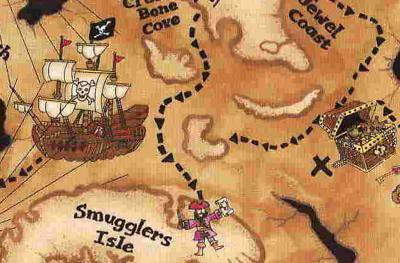
It’s worth taking a long, slow read of this morning’s Times story on lack of prosecution in general and particularly the lack of Justice Department civil or criminal cases regarding the “financial crisis.” For one thing, there are at least two instances of someone directly lying to the reporters in the story (although it is unknown to us which of the parties giving conflicting accounts is lying). Elsewhere, people put the blame on regulatory inaction: “In 1995, bank regulators referred 1,837 cases to the Justice Department. In 2006, that number had fallen to 75. In the four subsequent years, a period encompassing the worst of the crisis, an average of only 72 a year have been referred for criminal prosecution.” And here’s a nice way to look at a flaw in the system, from a UC Irvine criminology professor: “When regulators don’t believe in regulation and don’t get what is going on at the companies they oversee, there can be no major white-collar crime prosecutions. If they don’t understand what we call collective embezzlement, where people are literally looting their own firms, then it’s impossible to bring cases.”
Nice Day Applauded
Oh, spring, you schizophrenic bitch: One day you’re too hot, the next day you’re too cold, and always, always with the greyness. But some days you are just right. Anyway, it is goddamned gorgeous out there right now. If you have the time and energy, I suggest you walk to work. It’s still a touch brisk, but just a touch, and the brilliance of the sun makes it all worthwhile. Go get yourselves some of that vitamin D, it’ll put a positive spin on your whole day. Just be careful not to step in any dog shit, because it seems like there is an epidemic of incontinent canines roaming the streets these days. Also, good morning!
The Magnetic Fields' "69 Love Songs," In Order
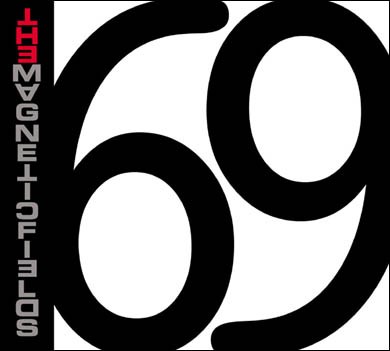
69. Love is Like Jazz
68. Experimental Music Love
67. Xylophone Track
66. Two Kinds of People
65. Zebra
64. How Fucking Romantic
63. Strange Eyes
62. For We Are the King of the Boudoir
61. Roses
60. Punk Love
59. Fido, Your Leash is Too Long
58. Love in the Shadows
57. Meaningless
56. Abigail, Belle of Kilronan
55. Queen of the Savages
54. Let’s Pretend We’re Bunny Rabbits
53. World Love
52. Love is Like a Bottle of Gin
51. Long-Forgotten Fairytale
50. Epitaph for My Heart
49. Blue You
48. I Can’t Touch You Anymore
47. The Cactus Where Your Heart Should Be
46. My Sentimental Melody
45. Very Funny
44. It’s a Crime
43. No One Will Ever Love You
42. The Sun Goes Down and the World Goes Dancing
41. Underwear
40. The One You Really Love
40. Wi’ Nae Wee Bairn Ye’ll Me Beget
39. The Night You Can’t Remember
38. My Only Friend
37. Boa Constrictor
36. A Pretty Girl is Like…
35. Bitter Tears
34. The Way You Say Good-Night
33. Yeah. Oh, Yeah
32. Nothing Matters When We’re Dancing
31. Asleep and Dreaming
30. The Death of Ferdinand de Saussure
29. Parades Go By
28. Acoustic Guitar
27. How to Say Goodbye
26. Reno Dakota
25. I’m Sorry I Love You
24. Time Enough for Rocking When We’re Old
23. I Don’t Want to Get Over You
22. If You Don’t Cry
21. Kiss Me Like You Mean It
20. I Don’t Believe in the Sun
19. All My Little Words
17. I Shatter
16. A Chicken with Its Head Cut Off
15. Promises of Eternity
14. Washington, D.C.
13. The Things We Did and Didn’t Do
12. Come Back from San Francisco
11. When My Boy Walks Down the Street
10. Busby Berkeley Dreams
9. Grand Canyon
8. (Crazy for You But) Not That Crazy
7. I Think I Need a New Heart
6. Papa Was a Rodeo
5. Sweet-Lovin’ Man
4. The Book of Love
3. Absolutely Cuckoo
2. The Luckiest Guy on the Lower East Side
1. You’re My Only Home
10 Suggested Pivots for Color
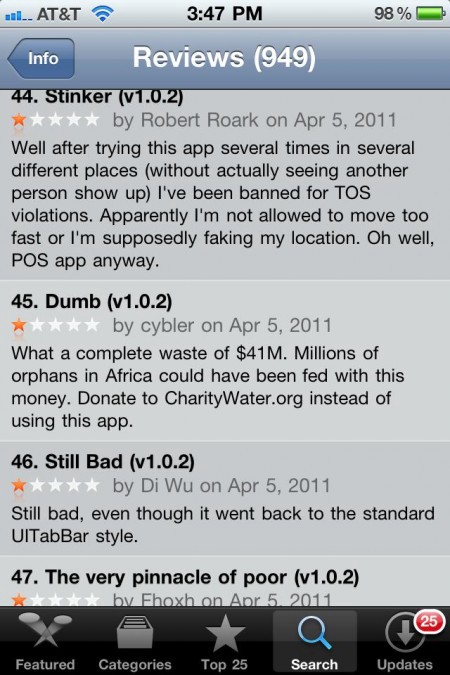
Color, the app that makes location-based photo sharing possible, that launched with $41 million in investment three weeks ago, is… well, it’s still in business! But the day comes in every business where you send the employees into isolation to “hack” new schemes to pivot the business….
10. It could be like Shazam, which “listens” to music and tells you what it is! Except for colors: you point your camera at something and it names it. (“So that’s what chartreuse is!”)
9 Visual learning tools for pre-tweens and toddlers. (“Color: We Learn Together!”) Point and match shapes! Has great sponsorship opportunities.
8. Totally kicky Latina lady iPad mag. (Growth market!) Color: ¡Lo tenemos!
7. Flashlight app… with tints.
6. Downlow gay hookup app. (“Get some… color in your life.”)
5. Bouncy castle tossing-thing physics game. This has nothing to do with Color or colors but EVERYONE LOVES a game where you throw things and everyone loves a bouncy castle! Just seeing one on the side of the road can make you happy. Why wouldn’t you want one on your Android?
4. Time management scheme for creatives like artists and writers: divides segments of the day into “shades.” Early morning is “hot green productive time”; late morning is “light pink revision time”; all the other times of the day are “dark blue porn and furious self-recrimination time.”
3. I dunno, something with real estate? Like overseas vacation houses listings or something? But like, in the cloud, you see. (Note: Not sure I really know what “the cloud” is.)
2. Personal finance is still a hot segment right? Can’t we just rip of Mint or something? But by making it social? Like you could check-in at places and input how much money you spent! And share your savings! With a Groupon thingie! Like if enough people share their spending info, they get discounts! Magic!
Outkast Superfan Puts A Great Amount Of Time And Energy Into Thinking About Outkast Songs
“Picking a winner between ‘SpottieOttieDopaliscious’/’ATLiens’ is like being asked to decide what is better, Denzel’s mid 90s mustache or my early April mustache? On the surface, they are equal and extremely important to society as a whole. With that said, the times that the members of Outkast decide to tell stories show them at their best and ‘SpottieOttieDopaliscious’ could not be a better example of that. It takes you to another world for about 7 minutes and when you return, things are slightly different, regardless of how many times you’ve heard it.”
— Atlanta native Rembert Browne really, really loves Outkast. He loves them so much that he put together a NCAA tournament-style 64-slot bracket to determine what he thinks is the all-time champion best song his beloved hometown duo ever recorded. He explains his choices in detail. Stankoff 2011, he has called it. And if you really, really love Outkast (and have fifteen or twenty minutes to kill) this is lots of fun.
Did Charlie Crist Steal Interior Decorating Secrets From The Wu-Tang Clan?
Former Florida Governor Charlie Crist can pardon Jim Morrison for a bogus obscenity bust, and officially apologize to David Byrne for using his music without permission. But he’s really going to be in trouble when Raekwon finds out that he’s wallpapered his offices with the album-cover artwork from 2009’s Only Built 4 Cuban Linx… Pt. II.

As we know from the first Only Built 4 Cuban Linx… album, which came out way back in 1995, Raekwon and Ghostface don’t take kindly to people biting their style.
Chris Kanyon's Doomed Quest To Be Wrestling's First Openly Gay Star
by Thomas Golianopoulos
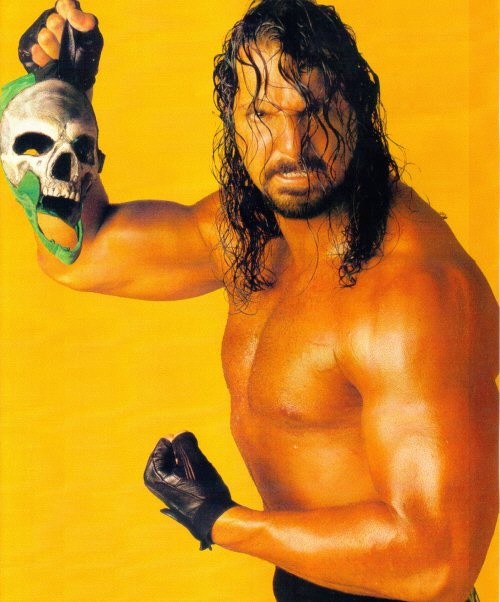
Chris Klucsarits’s night was off to a rough start. Backstage at the New York Wrestling Connection Sportatorium in Deer Park, Long Island, Klucsarits was involved in a conversation that could only happen backstage at a professional wrestling event: He was arguing with a promoter about using a giant towing chain during his match. He also insisted on carrying a crystal-skull goblet with red Kool-Aid to the ring. Earlier in the afternoon, he’d been meticulously stacking random objects — photographs, lumber — over and over again, and to cap it off, he was having trouble sewing on his wig. In short, Klucsarits was having a manic episode.
“He was out of his mind,” said Jim Mitchell, Klucsarits’s former wrestling manager. “He was bouncing off the walls. If you didn’t know any better, you would think he was on methamphetamine.”
On this night, Klucsarits would wrestle under a mask as “Mortis,” his gimmick from when he first made it big in the late 1990’s. Back then, Klucsarits — professionally known as Chris Kanyon — was a rising star in the now-defunct World Championship Wrestling, a promotion Ted Turner used to own. He was an innovative worker and the company’s go-to guy for training celebrity carpetbaggers such as Karl Malone and Jay Leno for their one-off cash-in Pay Per View appearances. Klucsarits was also making a go of it in Hollywood and worked as stunt coordinator for the David Arquette wrestling film Ready to Rumble. “I love Chris Kanyon. He was an amazing teacher,” said Arquette. “He taught me the little that I know on pro wrestling — how to take a bump, sell a move and conduct an interview. He was a true pioneer in his world.”
Now, Klucsarits scuttled on the independent scene, desperate for his old job back. World Wrestling Entertainment had fired him back in 2004, and here he was, six years later, in the minor leagues of professional wrestling. It was a scene straight out of The Wrestler, and the performers were a blend of townies, rookies and has-beens. Klucsarits now also had short hair. Which was a problem.
In the locker room, Klucsarits begged for help — he thought his costume would look completely ridiculous without the wig. He eventually attached the hairpiece and slipped on his red mask over it. The giant towing chain stayed behind but Kanyon carried the Kool-Aid-filled crystal-skull goblet with him and went to hit the ring.
Where everything came undone — starting with the wig.
Minutes into the match, Klucsarits threw a punch and with it, his wig dipped and shrouded his eyes, making him look like Cousin It. The crowd howled.
The laughter derailed him and he wrestled a sloppy match. Klucsarits won the bout but the bizarre behavior continued unabated. He drank from the goblet and posed dramatically with fans. He then broke character and screamed for the sound crew to play “The Lonely Man,” the closing theme from “The Incredible Hulk.” The wrestlers backstage were stunned. “Nobody wanted to say anything,” Mitchell said. “Everybody saw this guy as someone having a mental breakdown.”
Later at the hotel, Klucsarits announced he wanted to kill himself. It wasn’t the first time. Back in 2003, he had downed a bottle of sleeping pills. Now his manager attempted to console him. “I talked him through it,” Mitchell said. “He said, ‘No, all you people are being selfish. My parents tell me they are going to be heartbroken. My brother tells me he is going to be heartbroken. What about me? What about my fucking feelings?’
“That night, he told me it was a matter of ‘When,’ not ‘If.’”
Chris Klucsarits descended into one of the more sad and spectacular flameouts in the history of a business filled with sad and spectacular flameouts, and on April 2, 2010, he committed suicide at his apartment in Sunnyside, Queens. Friends said that an empty bottle of the bipolar medication Seroquel was beside him. He was 40.


Chris Klucsarits was a New York City kid from Sunnyside, whose life was defined by his struggle with his sexuality and his obsession with professional wrestling. He wasn’t much of an athlete growing up but he hit the gym regularly, filled out his lanky 6’4” frame and dreamed of following in the footsteps of his childhood idols, “Nature Boy” Ric Flair and “Rowdy” Roddy Piper.
He made the rugby team at SUNY-Buffalo and graduated with a degree in physical therapy but couldn’t shake the wrestling bug. “I actually tried to discourage Chris. I said, ‘Wouldn’t it be better if you just stayed as a physical therapist?’” said Robert “Bobby Bold Eagle” Cortes of the Lower East Side Wrestling Gym. Klucsarits reportedly earned $65,000 a year as a physical therapist. “He gave me a dirty look and said, ‘What are you crazy, Bobby? I love wrestling.’”
He then moved south, wrested in South Carolina and Memphis and got his big break after signing with the Atlanta-based WCW. Klucsarits wasn’t the most charismatic guy but he spent hours devouring wrestling tapes from around the world, trying to discover any obscure and spectacular wrestling hold. The hard work paid off. In 1997, Klucsarits debuted as “Mortis” — a character that was essentially a rip-off of the popular Mortal Kombat video games. It was a goofy premise and Mortis didn’t connect with fans but his in-ring work was stellar. “In spite of how ridiculous the gimmick was,” said his WCW trainer Jody Hamilton, “Chris came close to getting the character over simply because he did some new moves that people hadn’t seen.”
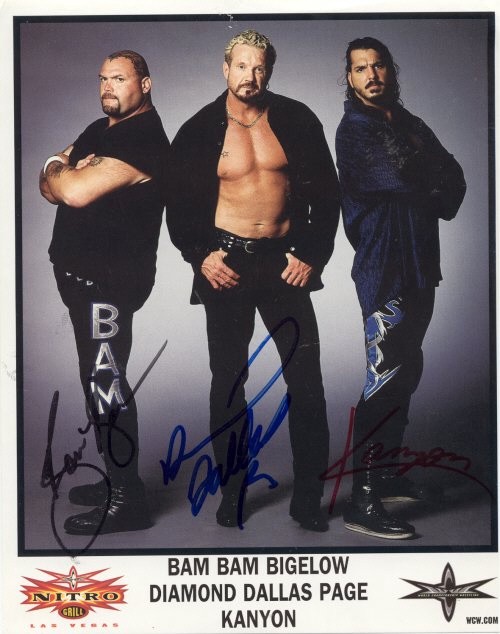
Once unmasked, he was billed as “Chris Kanyon” and sparkled in the middle of the card — his lisp and the rotating carousal of bad gimmicks hindered his chances at being in the main event. “He wasn’t going to make it as the top guy but he was one of my favorite people to work with,” said three-time WCW Heavyweight Champion Page “Diamond Dallas Page” Faulkenberg. “One of the curses of being a good worker is that they will put you with other guys to make them look good.”
That didn’t seem to bother Klucsarits. His friends said that he was proud of how his career was going. His biggest concern, however, was hiding his sexuality. Klucsarits discovered he was gay after kissing a girl when he was eleven years old. “There were no fireworks,” he later said. “I [then realized] that I would be gay for the rest of my life and that my life would not be easy.”
He first hooked up with another guy — a random teenager he met in a park — when he was seventeen. But after messing around by the monkey bars, Klucsarits told him not to come near him ever again. Later on, the Internet made hook-ups easier, but Klucsarits never had a serious boyfriend or felt comfortable in the gay community. “He didn’t really like gay people,” said his friend Robert McLearren. “He liked ‘straight-acting’ gay people.”
Klucsarits fit perfectly within the hyper-macho world of professional wrestling. He went boozing with the boys after events and even flirted with women. “He actually had sex with the girls,” said his friend Mike Passariello.
Jim Mitchell was one of the first people he came out to. “It was only because his cousins caught him with some gay pornography. They were helping him move and some gay porno fell out of a suitcase. He panicked so he had me call his cousins and pretend that I had ‘left something of mine with him.’”
Klucsarits eventually came out to his family about ten years ago. He first confided in his older brother, Ken and had him tell their parents. He informed most of his friends over AOL Instant Messenger.

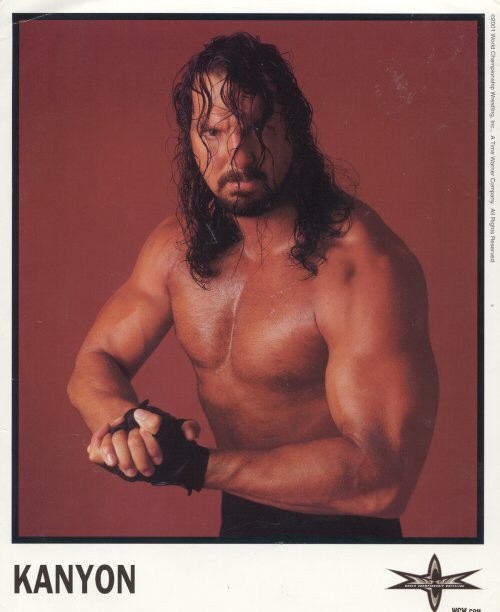
At this time, Klucsarits was wrestling for WWE after they bought WCW in March 2001. He had some initial success, holding the United States title and Tag Team title, but WWE brass allegedly weren’t fans of his innovative move-set and overall wrestling style. Then came the injuries. In October 2001, he tore his anterior cruciate ligament and he was later hospitalized with a staph infection in his left bicep. One night, his lungs filled with fluid and life-saving emergency surgery was performed. He spent two weeks in the hospital and lost thirty pounds.
Klucsarits didn’t return to WWE television until February 13, 2003. During a bizarre segment, Klucsarits emerged from a large box (or, better yet, a closet) dressed like Boy George and sang “Do You Really Want to Hurt Me?” to his old rival, The Undertaker, before attacking him. The Undertaker got the upper hand and annihilated Klucsarits with a steel chair; the final chair shot legitimately knocked him unconscious. Klucsarits later said that he was instructed by a WWE employee to “sing like a faggot.”
In the preceding weeks, Klucsarits floated the idea of coming out as the first gay professional wrestler. “I wasn’t 100% sure if that was a message from [WWE Chairman] Vince [McMahon] for me to NOT come out of the closet,” Klucsarits later wrote on his MySpace blog. “So I continued to pursue the idea, hoping to get a verbal answer from Vince.” The Boy George incident was his last major appearance on WWE programming. He was demoted to the WWE’s B-level shows and fired in February 2004.
Klucsarits then retired from wrestling and lived as an out gay man in Florida. He said in an interview with outsports.com that “his sexuality was the cause of my depression, the reason I attempted suicide.” During later treatment, he was diagnosed with bipolar disorder.
During the brutal “lows,” Klucsarits would often stay in bed for days. At times, he lost touch with reality. “Chris believed in parallel universes,” McLearren said. “He believed he died in one universe. After that night his lungs filled with fluid, he had no [wrestling] career and to him, that meant his life was over. I remember he called me and asked, ‘How long have I been dead?’ He was standing outside a facility in New York, ready to commit himself because he was so out of control at that point.” In an effort to regain control, Klucsarits plotted a comeback.

During his career, Klucsarits portrayed a masked Thai fighter, a grungy cult follower and a deranged stalker. In real life though, Chris Klucsarits was a gay man who believed that he might have lost his job because of his sexuality. He decided that Chris Kanyon should be that same guy.
In February of 2006, he came out at an independent wrestling show in Sudbury, Ontario. The crowd was confused, as were the wrestlers. “Some guys wondered if it was a work, you know, a storyline,” said Chris “Cody Deaner” Grey. “Wrestlers think everything is a work.”
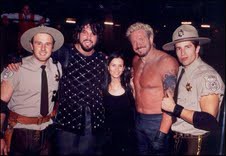
After coming out in Sudbury, Klucsarits wrote a press release stating that “Chris Kanyon” the character was gay. It was meant to create interest from WWE and Total Nonstop Action, a new Orlando based promotion: The plan was to sign a new contract and come out on national television. Both promotions passed.
“We always try to give former talent second looks,” WWE spokesperson Robert Zimmerman said. “We felt like he had a limited skill-set at best for the job. Because of that, we wouldn’t hire him back.”
Klucsarits came out as “himself” at an independent Pay Per View event a month later. He believed WWE and TNA missed out on a groundbreaking and potentially popular angle. “I have absolutely no doubt that you could get a positive gay role model over in pro wrestling,” said Barry Alvarez, editor of the wrestling newsletter Figure Four Weekly. “It wouldn’t be easy. I don’t want to say wrestling fans are set in their ways but they aren’t always progressive.”
Professional wrestling has a dubious track record with minorities. If a performer has any accent, then, naturally, he’s an evil foreigner. Homosexual gimmicks pandered to even uglier stereotypes. Past acts such as Adrian Adonis, Billy and Chuck, the West Hollywood Blondes and Orlando Jordan, an open bisexual currently employed by TNA, wore make-up, pink ring tights and used their “sexuality” to garner cheap heat from fans.
Klucsarits aspired to portray a tough guy that just so happened to be gay. And in this world of Prop 8, Carl Paladino, the gruesome “Goonies” attacks in the Bronx and the Tyler Clementi suicide, Klucsarits could have had a positive impact.
“He wanted to be a role model for people in the closet,” Grey said. “He wanted to set an example for teenage boys that were struggling with their sexuality and were being teased.”


Klucsarits made one last gasp at getting rehired. On September 8, 2006, he attended a WWE event in Tampa, Florida and held up signs directed at WWE stars Triple H and Shawn Michaels. They read, “HHH please ask Vince why he really fired me” and “Shawn, please pray for my gay soul.” He was eventually ejected from the building.
“He thought he was creating controversy in hopes of coming back,” said McLearren, who also claimed Klucsarits was in e-mail contact with WWE Executive Vice President, Stephanie McMahon. “Chris said that Stephanie gave him the go-ahead to do whatever he wanted. I think she [thought], ‘You are not employed here. You can do whatever you want.’ And he [thought], ‘[Go] build the storyline.’”
That fall, Klucsarits found a soapbox to lash out at WWE on “The Howard Stern Show.” He burned his final bridge with the company when he joined former colleagues Mike Sanders and Scott “Raven” Levy in July 2008 and sued WWE, challenging the long-held practice of categorizing wrestlers as independent contractors. “It seemed like he had a lot of anger built up inside him about how he was portrayed in WWE,” Mike Sanders said. The lawsuit was soon thrown out because the statute of limitations had run out.
Alienated from the business he loved, Klucsarits was crushed. He lost contact with friends, only rarely communicating through text message. Still, he sought help. Klucsarits researched LSD treatment for bipolar disorder and took anti-depressants — but not consistently.
He also contacted Christopher Nowinski, a retired former professional wrestler and now co-director for the Center for the Study of Traumatic Encephalopathy at Boston University School of Medicine. Klucsarits claimed that he suffered at least twelve concussions during his career and believed they contributed to his depression.
“There is a disease called Chronic Traumatic Encephalopathy where depression can be a symptom,” Nowinski said. “We’ve diagnosed [people] post mortem with CTE who were [originally] diagnosed with bipolar [disorder]. Considering the rate at which we are diagnosing athletes with CTE who have had similar brain trauma exposure, I would not be surprised if Chris was suffering from CTE when he passed away.”
“Chris went from a happy adjusted guy to someone who clearly suffered from brain damage,” Passariello said. “Watching him deteriorate over those years was very painful.”
In his last days, Klucsarits worked as an insurance agent and returned to physical therapy. He didn’t last long at either gig. “He lost all his confidence in his abilities because he hadn’t done it in so long,” McLearren said. “He was just overwhelmed.” He also dreamed of opening a wrestling school in Sunnyside but it didn’t get past the planning stages
His friends don’t know what pushed Klucsarits over the edge — they mentioned problems with the IRS, looming eviction and Medicaid cuts.
On April 7, 2010, at a funeral home on Queens Blvd, Chris Kanyon action figures covered a table. Bobby Bold Eagle was one of many former and current professional wrestlers at the wake. He huddled with Klucsarits’s parents.
“We had a good cry,” he said. “I told the dad, ‘Look man, I’m sorry I trained your kid for this business. Just don’t hate me, man, because that’s [all] he wanted.’”
Thomas Golianopoulos is a writer living in New York City whose work has appeared in The New York Times, New York Observer, Spin, Vibe and a few other places. You can follow him on Twitter.
Photos from the collection of Robert McLearren.
Here's What Happens If You Don't Do Your Taxes

You, yes you, can do your taxes this year. Many of you are done, most of you haven’t started, and a few of you are freaking out. Some of you are thinking: what if I just don’t file? What will happen if I don’t pay? What if I didn’t file last year or the year before that? What will they do to me and will I be in prison with Wesley Snipes?
I have some answers to those questions! You should note that I am not a tax professional, that this is definitely not professional advice and that every situation is unique. Also you should be doing your taxes right now probably, not reading the Internet. But here’s some experience, offered person-to-person, that is not professional counsel.
It is better to do a cruddy job and file than to not file.
When I say “cruddy job,” I don’t mean “making wild guesstimations” or being dishonest. I mean: If you can’t nail some stuff down, forget about it and move on. For instance: Do you not have receipts for some expenses? Big deal: cut them out and forget about it. (These small expense-deductions don’t generally have too much effect on your tax burden anyway.) Err on the side of “hurting” yourself and just plow through it. It’s just not worth making yourself crazy over fifteen bucks!
You can fix your return!
It is easy to amend a return. It’s also easy for the IRS to amend your return: “You do not need to file an amended return due to math errors. The IRS will automatically make that correction.” Intense, right?
It is better to file and not pay than to not file and not pay.
What happened, you spend all your money? That’s okay, pal! Do your taxes, send ’em in, if you have absolutely no money. You will incur not-totally-crazy penalties over time due to not paying, and they will want to talk to you about when you can pay. (Yup, it’s always the broke people that have to pay more in this world.) That’s not ideal, sure! But it’s a lot more ideal than not having filed.
Okay, but should I be scared of the IRS?
The IRS only wants to hear from you. The answer, surprisingly, is a very firm “no”! Not at all! The IRS has some of the nicest, most understanding people I have ever spoken with in my life. True fact.
There’s a lot of TV- and movie-propagated terror about the IRS. (As well, the whole idea of the government and money is anxiety-producing on its own, sure.) And the truth is… well, they kind of used to be a little mean? But that’s actually ancient history. The people at the IRS are some of the funnest people ever! I have had long hilarious conversations with them on the phone. (For real, there are some hilarious ladies down in Atlanta.) IRS employees are like most civil servants; they deal with confused, freaked out and sometimes very dingbatty people (not you, friend!) every day — the kind of people who do not follow directions, particularly. So if you are not a jerk, they will be delighted to speak to you, at length. They will sometimes be like, “Girl, how did you get into this trouble?” and you’ll be like “Oh, haha, I’m a mess! Mistakes happen!” and they’ll be like, “I hear you! I get it!” Do not be afraid. What they want is to hear from you.
Should I be scared of my state tax department?
Actually… well, maybe just a little. The same rules apply as above — they do want to hear from you! — but, for instance, the New York State Department of Taxation and Finance seems to be a little cranky. They want their money, they want it now, and if you don’t give it to them, they will take it. I’m sure there are some wonderful, caring people working in all of America’s fine state tax departments!
What happens if you don’t file?
Have I mentioned that the IRS only wants to hear from you?
No really, what happens if you don’t file and don’t pay?
Great news! Eventually the IRS will do your taxes for you. This is called a substitute return. Doesn’t that sound nice? Well it’s not particularly. For an agency that’s devoted to taxes, they don’t do a very good job at it. (Kidding.) So the good news is that your taxes will be done! The bad news is that they will take your reported income, slot it into the appropriate tax bracket, and say you owe that percentage. So if you made $85,000, bam, you owe 28%.
Also? Lots of people can’t deal with taxes when they’re even going to get money back! People are funny. But you should know that your refund disappears in three years if you don’t file.
What happens if, like, I ignore the IRS?
Well, you’ll get a ton of mail. And the problem with being “in trouble” is that your sense of being in trouble fades really fast. That’s how people are built. Most people pay taxes because they’re scared of the consequences. So, you don’t file one year, and then… nothing that terrible happens! So you’re off to the races. And then you get a scary piece of mail from the IRS, and you ignore it, and… nothing terrible happens again! It’s very easy for the human mind to acclimate to this.
And then, they will make it so that you can’t ignore them. (For instance, your debit card will stop working! Heh.) You should head that off at the pass. The moral being: even if you aren’t scared of the consequences now, you will be later.
Ugh, they sent a letter to everyone I’ve ever worked for! How humiliating!
Nah, it’s not. Years ago, the IRS sent out a letter to people who’d paid me money, informing them they had an interest in having that money for themselves. And half the people who got these letters — caring, decent, professional, adult-type people! — were like “Ha, I got one of these letters last year!” It was a moment of bonding. To be fair, one person was a little judgmental, but you are by no means alone in these issues.
So how do I work out paying if I haven’t paid?
You know how GE and Bank of America don’t pay any taxes? That happens because they’re well-advised. You too should be well-advised. Down the road, if you end up in debt with the IRS, you will likely have a couple of options — usually Offer in Compromise or Payment Plan. These are actually not terribly straightforward. For instance, you can work out a payment plan with the IRS, after filling out quite a lot of paperwork, and having your financial life pretty well-surveilled by them, but the IRS is actually required to ensure that you have enough money and income to meet the payment plan. (They can’t agree to a payment plan that’s onerous.) But that doesn’t mean that, even if you are on an installment plan, that penalties don’t continue to accrue! So, many people find that they’re often better off getting a bank loan. And Offer in Compromise is extremely complicated. With those, for instance, you cannot miss a yearly tax payment for at least the next five years, or the deal is off. So you are going to need to become an expert — but more importantly, you’re also going to need to consult with a real expert.
Ugh, I don’t know what to do!
Guess what? The IRS only wants to hear from you. Also? These things are never as bad as you think. Now go off to your quiet place and do your taxes. I can promise you’ll be happy you did.
HELP I’M PANICKING!
Lots of online tax products are free to use to file an extension. If you can’t do ANYTHING else at all, do that.
Photo by the one and only Mat Honan.
Silvio Berlusconi Sees The Light At The End Of The Tunnel
Italian Prime Minister Silvio Berlusconi has suggested that he will retire from public office at the end of his term in 2013. Berlusconi made the comments at a private dinner the night before the Italian parliament was expected to pass legislation to speed up the pace of trials in that country, which would coincidentally put an end to several of the trials in which the Prime Minister is personally involved. The legislation will also have the effect of making it unlikely that “any action will now be taken against builders, officials and property developers suspected of responsibility for deaths in the 2009 L’Aquila earthquake. More than 300 people died, many of them in buildings allegedly constructed with sub-standard materials.” But maybe you’d rather just read about the bunga-bunga parties.
Us v. Them: When The Liberal Media Met In Boston
by Katjusa Cisar

At my first session at the fifth National Conference for Media Reform in Boston, at a panel called “Wikileaks, Journalism and Modern-Day Muckraking,” I sat next to a man who regaled me at length with how he had learned to find the real news from Libya via a Toronto professor’s blog. Later, as NCMR volunteers walked around the room collecting questions for the panelists on three-by-five cards, I watched him filling up most of his card. He carefully block-printed a preamble and two-pronged question, the first part of which was, “IS RESISTANCE FUTILE?”
Well, no. Based on all of the projects and innovation I learned about at the conference, no. But the lefty-friendly atmosphere of the conference occasionally bred simplistic Us vs. Them sloganeering that made me fidget in my seat.
In a post last Friday, Dan Gainor, an opinion writer at Fox News, scorned the conference as the nefarious plotting of a small cabal of liberals funded by “glib lefty investor” George Soros. While it’s true the nonpartisan-professed group Free Press, which has organized the conference since 2003, attracts lefties, the list of presenters — almost 350 of them — was impressive and not narrow. It included Glenn Greenwald of Salon, House Minority Leader Nancy Pelosi, members of the Federal Communications Commission, Alexis Ohanian of Reddit, Andy Carvin of NPR, Steve Katz of Mother Jones, Clothilde Le Coz of Reporters Without Borders, Craig Newmark of Craigslist, and an exhaustive who’s who of independent and progressive-minded media, led by the genre’s rock stars/fertility goddesses: Amy Goodman, Laura Flanders and John Nichols, among others.
Gainor’s preemptive ridicule focused on the curious lack of media coverage it garners (ironic!). He’s not looking in the right places. Boston’s alt-weekly, The Phoenix, for instance, published informative NCMR-related articles on the latest developments in net neutrality and low-power FM radio. But he’s also sort of right.
The conference brought together about 2,500 journalists and media activists to talk about issues like net neutrality, public media policy and media democratization. These discussions included a healthy dose of lefty posturing. In the “Us. v. Them” dynamic of the weekend, “Them” was an amorphous mass — from CNN to mainstream daily newspapers, from the Hard Right to conservatives in general. And therein lay my discomfort. It’s not the politics that bug me. It’s the othering, the proud polarization in an absence of much political diversity. It comes down to this: An otherwise worthwhile gathering of journalists and media activists — holding, among them, fairly wide-ranging views! — is probably alienating people who’d add to the conversation and benefit from it.
This mentality allows platitudes and lazy thinking to breed. Nancy Pelosi’s speech Friday was certainly a low point. She stammered and rambled incoherently, mostly about health care reform, and apparently hadn’t prepared to give much insight into the topic at hand beyond statements such as, “Media reform is about the core value of our country.”
In an interview at the conference, Salon’s Glenn Greenwald told me he thinks the media landscape right now is so polarized that the conference’s progressive message could only conceivably have an impact on “allegedly mainstream” or “neutral” newspapers like the New York Times. A search of the Times archives turns up nothing on NCMR.
No doubt, political wrangling is vital to issues like net neutrality and control of the airwaves. Like Greenwald, fellow NCMR panelist Ben Huh of the Cheezeburger Network told me this tension has become the current reality of the debate.
“Unfortunately, it has become politicized, right? I mean, media reform and the right to have free speech and the right to have access to the Internet in the freest way possible should not be political,” Huh said. “But because of the way I think open broadband and those initiatives have gone down, it has become, not necessarily liberals versus conservatives, but the-right-to-control-commerce versus the-public’s-right-to-use-an-open-Internet.”
The network he runs — which includes I Can Has Cheezeburger, Fail Blog and The Daily What — is one of the small fish, he added, and reliant on net neutrality to survive: “I think Google’s pretty much the lone voice (lobbying for a free Internet) out there. And you’ve got all the telcos on the other side. They know how to play the government game. They’ve got a leg up on everybody else.”
Everyone else? That has to include a wider swath of America than In These Times readers. Personally, I’m thinking of my father, an off-the-grid conservative Catholic with whom I can only find common ground in good music and good beer. But I’m sure he’d support low-power FM radio access and other grassroots media efforts. If he actually used the Internet, he’d certainly get behind net neutrality, too.
Alex Beam of the Boston Globe, who appeared on a panel Saturday about successes in local media coverage, is a member of the much-hated-on mainstream media and employee of a newspaper that nearly shut down completely two years ago. He reflected later to me on the absurdity of being in a roomful of people who condemn big corporate newspapers. “I don’t share the core ideology that seemed to infuse the event,” he said. “Do I want to sit on a panel and refer to everyone who works for Wal-Mart as the bad guys? I’ve seen wonderfully powerful critiques of Wal-Mart in The New York Times.”
He was curious about and admired several of his co-presenters, he said, but apparently not enough to stick around for the rest of the conference beyond his scheduled panel: “I am not trying to reform the media. Media is being reformed. It’s being restructured in fundamental ways. That’s not what this conference was about.”
Leading up to the conference, I’d spent the past six months in sprawling Atlanta doing under-stimulating freelancing for two hyperlocal news operations, AOL-owned Patch and a network of Blockshopper-run sites in the Houston ’burbs (how’s that for “hyperlocal”?). Hyperlocal is debatably The Next Big Thing in The Future of Journalism, and AOL is leading the trend with Patch. I did not hear Patch mentioned once during NCMR, probably because, in the conference’s anti-corporate ideology, AOL counts as a “Them.”
My New Year’s resolution this year was: pay less heed to future-of-journalism worrywarts and soothsayers. I couldn’t stomach reading one more post or article on social media strategy or personal branding or the philosophy of paywalls. It had all become repetitive noise and a distraction. I entered the weekend excited — the schedule looked substantive and, frankly, I was ready to be energized and inspired. Media needs a kick in the pants. I need a kick in the pants. But what had crystallized for me by the end was something along the lines of John Lennon’s famous truism about life happening while we’re busy planning it. Media transformation happens while journalists and activists and politicians navel-gaze and theorize on reforming it.
Ahem. Of the ideas, projects and people at NCMR, here are a few favorites:
Spot.Us founder David Cohn joked on a panel discussion of young entrepreneurship that he wants to become “the Rupert Murdoch of independent journalism.” Under the fundamental assumption that journalism never was and never will be sustainable in the traditional ad-driven way, he started this open-source project in 2008 in the Bay Area to pioneer community-powered reporting. Spot.us is a conduit for story tips, reporter’s pitches and money collection and has since expanded nationally. The reader-supported model fits with trends in the news industry, Cohn said: “We’re actually in a very early stage where people are starting to open up their wallets.”
During a panel on “Old-School Journalism Organizations Shaping the Future of Journalism,” Orion Magazine
editor Jennifer Sahn said the economic collapse barely affected her publication because it has been completely ad-free and reader-funded for decades: “This is Orion’s moment. We’ve been user-supported, always.”
Jennifer Pozner, author of Reality Bites Back: The Troubling Truth About Guilty Pleasure TV, did a fun but disturbing deconstruction of reality TV, particularly Flava Flav’s minstrel dress-up on VH1’s “Flavor of Love,” and argued that if reality TV continues in the same direction, “there is going to be a tremendous act of violence” on a show.
The Newspaper Guild is heading up a writers’ boycott of HuffPo (on Facebook at facebook.com/heyarianna). “Arianna has done a great job of exploiting the moment. There won’t be anything left to aggregate,” said Bernie Lunzer, president of the Newspaper Guild, a labor union within the Communications Workers of America.
At a discussion of WikiLeaks on Friday morning, Glenn Greenwald got cheers from the crowd after he argued that there’s “no greater threat to the free press than prosecution of WikiLeaks.” Blogger Erich Vieth posted a good recap of the talk, plus a few videos.
The big celebration of the weekend (there was free food!) was the recent passage of legislation that will open up the airwaves to low-power FM radio stations. In a speech at the conference, Senator Mike Doyle (D-Penn.) praised the bi-partisan effort that allowed the legislation to pass. The Uptake has the video of it.
The hands-on “Sandbox” workshop series made concrete idea of media democratization and included how-to sessions on soldering your own audio cable, building a wireless network with open-source software, and even old-school printmaking.
Katjusa Cisar lives in Atlanta (but not for long) and plans to claim her cat Clyde on her taxes as an office assistant.
Photo of the closing panel of the National Conference for Media Reform, from left to right: Deanna Zandt (moderator), Craig Newmark (craigslist), Ramya Raghavan (YouTube), Ben Huh (Cheezburger Network), Alexis Ohanian (Reddit), Cheryl Contee (Jack and Jill Politics).
